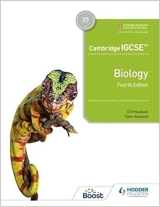Chapter 41. Observation and experiment
Page 358
1. 1 This may be a matter of simple observation. If the tree trunks in a wood all show algal growth on the south side but nothing on the north side the question is answered for this particular area. If the observations are not so clear-cut you would have to find ways of measuring the areas of algal growth on the north and south sides.
2 There is no way of measuring degrees of ‘companionship’, so this could not be scientifically investigated.
3 This is too sweeping a generalisation to be investigated as it stands. You could match groups of boys and girls of the same age and similar physique, (you would not expect a short tubby boy to compete with a tall, slim girl), and specify a range of distances for them to run. Alternatively you could study the results of important junior athletics competitions. This would give results for trained athletes.
4 This can be investigated experimentally but the generalisation is too great. You would have to refine the question to: ‘Do some seeds need light in order to germinate’?
5 There will be plenty of anecdotal evidence but little objective evidence. You would need a large cohort of subjects matched for age and conditions, with some used as controls. There would be a wide variety of sources of vitamin C in peoples’ normal diets before any measured supplements could be tested.
6 This could be investigated scientifically by measured observations, once you have decided the size of the samples to be studied and defined the boundaries of ‘north’ and ‘south’.
Page 359
1. 1 This would be based on objective evidence.
2 This is entirely anecdotal evidence.
3 As stated, this is anecdotal evidence but could be supported by objective evidence.
4 This statement must have been based on objective evidence since precise measurements must have been needed.
Page 362
1. By selecting areas where dandelions were abundant, Paul will have distorted the results to show far more dandelions than there really are.
2. Throwing the quadrat frame 5 times in one area and 10 times in the other is likely to make the comparison inaccurate because it is trying to influence the results.
3. Estimated population 35 x 27/8 = 118.
a By choosing to sample only a proportion of the ground, the results could be affected by migration of marked individuals out of the area. The area sampled must be confined in some way.
b A hotter day might promote more activity in the area but this will affect marked and unmarked individuals equally, so it should not make a significant difference.
c If the marking process interfered with the free movement of the marked individuals it could distort the result because the marked grasshoppers will tend to stay in the same place.
d If the effect of the anaesthetic persisted into the second day it could distort the results as described in c.
|
Downloads
Download the answers in PDF format below
Section 1, Chapters 1-5
Section 2, Chapters 6-9
Section 3, Chapters 10-12
Section 3, Chapters 13-17
Section 3, Chapters 18-20
Section 4, Chapters 21-24
Section 5, Chapters 25-27
Section 5, Chapters 28-29
Section 6, Chapters 30-34
Section 6, Chapters 35-37
Section 7, Chapters 38-39
Section 8, Chapters 40-41
|
